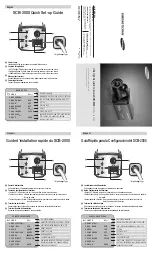
V1.02
Thom Hogan’s Complete Guide to the Nikon D300
Page 62
The anti-aliasing filter (top gray layer) filters out high frequency
detail and near infrared energy in the light (orange arrow) before it
gets to the microlenses that sit over the photosites (Bayer pattern
below).
Note: Why is the filter called a “low-pass” filter? Artifacts—
unwanted data—are produced by any analog-to-digital
conversion. There’s a basic rule of conversion that all input
frequencies below something called the Nyquist frequency
will be correctly produced, while those above the frequency
tend to more easily generate aliasing artifacts (often visible
as moiré or color fringing in digital cameras). The filter on
the D300’s sensor attempts to pass the data below the
Nyquist frequency for the sensor pitch, and reject data
above that frequency, thus the name “low-pass.”
Note: The IR-cut and anti-aliasing filter can be removed from
some cameras (with a great deal of fussy disassembly that
will void your camera’s warranty). Why would you want to
do that? Two reasons: (1) By removing this filter you
remove all the anti-aliasing. This can produce higher acuity,
but at the potential expense of more incidence of moire and
aliasing of diagonal edges. (2) By removing the IR-cut
filtration and substituting a visible light-cut filter you can
convert a camera into a dedicated infrared camera (see
“Infrared” on page <687>). Unfortunately, the D300 design
has a complex filtration design due to the automatic sensor
cleaning system. After disassembling a D300, I can see that
it is not going to be easy to circumvent the filtration or
replace it, and you’d likely lose the special sensor cleaning
abilities.
















































